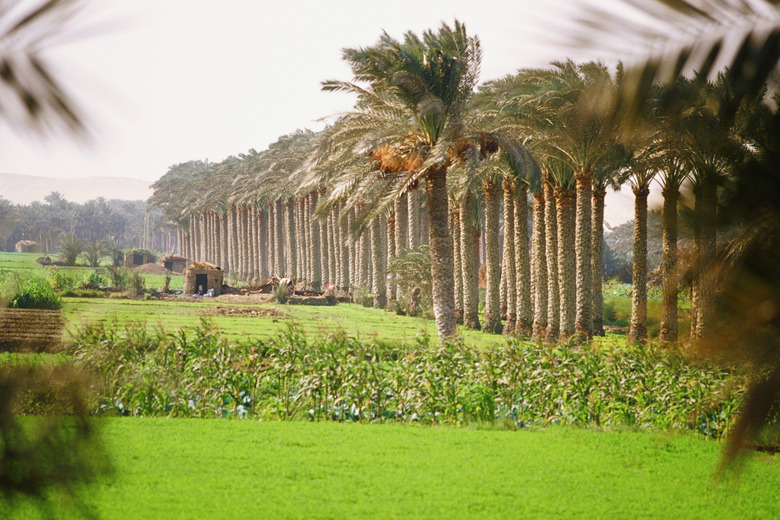What Was Silt Used For In Ancient Egypt?
Ancient Egyptians were farmers and utilized the fine silt along the banks of the Nile River and in the Nile Delta to cultivate crops. Annual monsoons in mountainous Ethiopia to the south caused flooding downstream where the Nile courses through Egypt for about 600 miles. Egyptians relied on this annual cycle to replenish the fertile soil needed for growing their crops. Flooding deposited silt rich in minerals along the banks of the Nile and the delta north of what is now Cairo, where the river splits before reaching the Mediterranean Sea. Staple crops were emmer wheat and barley for beer and bread, and flax for making linen.
What is Silt?
What is Silt?
Flowing rivers, glaciers and wind transport rock fragments, grinding them against one another into finer and finer particles. Silt particles are fine and powdery, smaller than individual grains of sand but larger than separate particles of clay. Technically, a silt particle is less than .002 inches across. Silt settles in still water, and can be detrimental if it fills in wetlands, canals or lakes. Silt provides a fertile growing medium, as it contains minerals intrinsic to the originating rock fragments and its structure enhances water retention and air circulation.
Lifestyle of Ancient Egyptians
Lifestyle of Ancient Egyptians
Ancient Egyptians used the silt deposited along the banks of the Nile to their advantage, fitting their lifestyle to the natural cycles of monsoons and flooding. During the monsoon season, roughly June to September, farmers mended tools and tended their livestock. As soon as the floods receded, they plowed the rich soil along the river banks and seeded crops along the 6-mile wide strip of fertile land. Harvest season was from March to May, and then summer monsoons would begin the cycle anew.
The Nile River
The Nile River
The Nile is the longest river in the world, originating in Burundi and flowing through Sudan, Ethiopia and Egypt to empty into the Mediterranean Sea. Before the Aswan Dam was completed in 1970, the Nile would flood during summer monsoons, depositing water, mud and silt on its banks. Egyptian life was centered along the banks of the Nile, as it provided food, water, a transportation route and was more hospitable than the desert beyond.
Crops
Crops
Egyptians cultivated many vegetables common to modern North American agriculture and cuisine, including onions, leeks, garlic, beans, cabbages, radishes and lettuce. They also grew crops that the Middle East is still known for, such as lentils, figs, grapes and melons. Ancient Egyptians harvested papyrus reeds growing naturally along the river banks and wove them into sandals, baskets and mats. They also invented papyrus, a predecessor to paper, by weaving and pounding papyrus reeds into a writing surface.
Cite This Article
MLA
Jensen, Lisa. "What Was Silt Used For In Ancient Egypt?" sciencing.com, https://www.sciencing.com/silt-used-ancient-egypt-15974/. 24 April 2017.
APA
Jensen, Lisa. (2017, April 24). What Was Silt Used For In Ancient Egypt?. sciencing.com. Retrieved from https://www.sciencing.com/silt-used-ancient-egypt-15974/
Chicago
Jensen, Lisa. What Was Silt Used For In Ancient Egypt? last modified March 24, 2022. https://www.sciencing.com/silt-used-ancient-egypt-15974/
